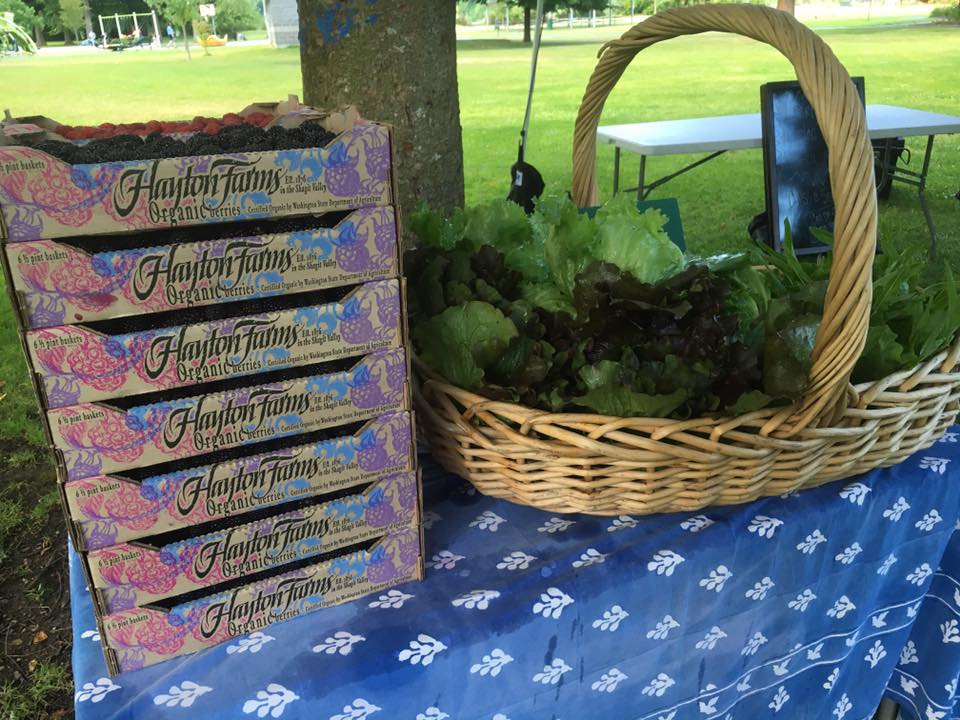How Can We Help?

Farmer’s markets are an ideal place from which to glean and if you visit often you’ll soon become a familiar face to the vendors and the Market Manager. Markets are a dichotomy of foodies, enthusiasts, and folks just beginning to take part in the local scene. You’ll encounter young and old and lots of dogs. If you’re new in town or want to learn more about locally grown products, markets are excellent knowledge banks where tradition takes the front seat. There’s no need to sell the importance of gleaning because vendors and consumers alike have already jumped on the local food train.
By having a consistent booth at both The Bremerton Farmer’s Market and the South Kitsap Farmers Market, Kitsap Harvest became part of the food access landscape in Kitsap County. As mentioned in earlier write-ups, the Market booths had many goals, one of these goals was to interact with farmers and provide a centralized location for produce donations and systems for food access organizations to pick up produce.
We also used the Market as a way to connect with community donations. People became familiar with our mission and learned that they could bring their excess produce to the market to donate. This was often more convenient than trying to connect with the Foodbank during open hours.
The market recovery consisted of the below steps:
- Apply to Farmers Markets for a seasonal booth.
- Purchase a scale, bags, and food baskets. If you have your own booth, purchase a tent, tent weights, table, and tablecloth.
- Have materials such as door hangers and brochures about your program. Prepare a document for recording donations. (Collection sheet link.)
- Connect with food access programs such as food banks, youth centers, shelters, and local clubs that could deliver to low-income senior centers; this is a vulnerable population so we take extra care with who visits these donation locations. See if these partners have volunteers that can come to pick up the produce at the end of the market.
- Rotary is another great option for volunteers, and an opportunity to teach consistent record keeping.
- Introduce yourself and your program to Farm vendors and let them know what system you have in place.
- Let them know that you will be walking around after the market and if they have excess produce, you would gladly take it to a place in need. Introduce your partner programs here.
- At the end of the market, walk around to the farmers with bags collecting donated produce.
- Weigh, count, and measure all produce donated making sure to document what farm it is donated from.
- Give the produce to the food access volunteer who will take it to the food bank refrigerators for food bank clients on the next day.
- Record all donated produce into a spreadsheet (link).
- Contact the Farmers market manager for a copy of all food vendors addresses.
- Provide thank you and tax-donation receipts at the end of the market season from the food banks to the farmers.
- Thank everyone involved including market managers.
- Use Farmers Markets as an opportunity to promote your program and show the consistency of always being reliable and there.


